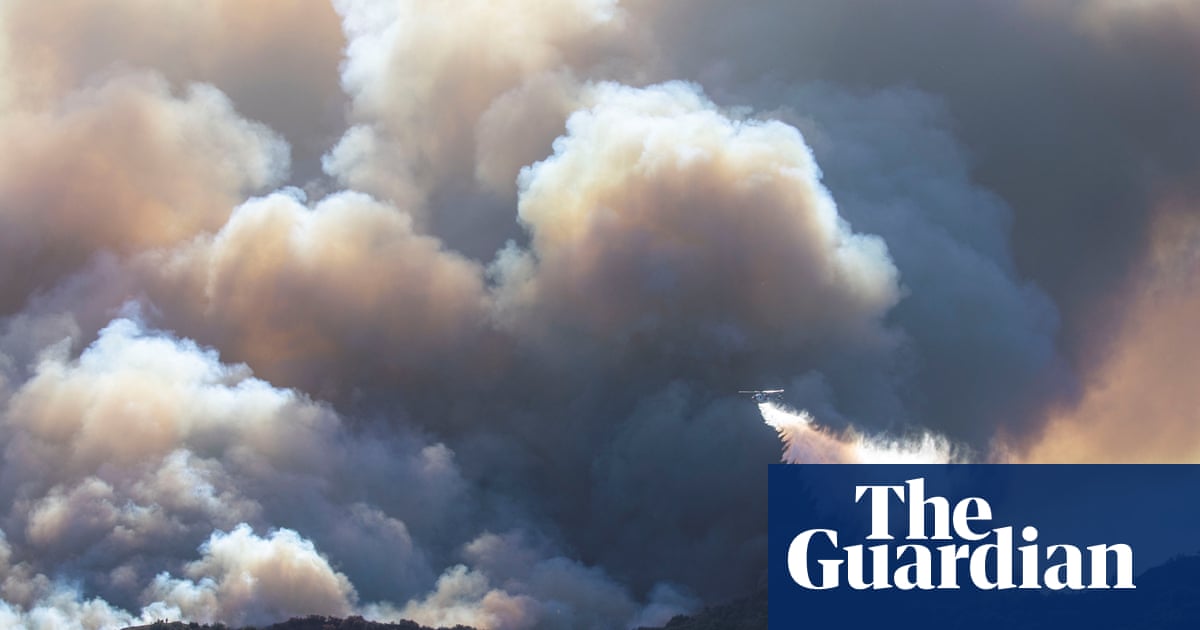The Los Angeles wildfires have claimed the lives of at least 24 people and have burned more than 100,000 structures. While the focus is understandably on avoiding the flames, another immediate danger lurks across the county and beyond, one more difficult to escape: smoke.
The most dangerous component of wildfire smoke is fine particle pollution, also known as PM2.5 or soot. These tiny particles, smaller than one 20th the width of a human hair, can, if inhaled, become embedded in the bloodstream and lungs. It is estimated that about one-third of all particulate matter pollution in the US now comes from wildfire smoke.
“Wildfire smoke is super toxic to the lungs, more so than ‘regular’ smoke, because of the concentrations of fine particulates,” said Don McKenzie, an assistant professor at the University of Washington’s School of Environmental and Forest Sciences.
“People with compromised lung function are at higher risk of harm,” he added. “Damage from smoke exposure of any type is cumulative, but especially with the high concentrations of the fine particulates, because they can lodge themselves in small spaces within the lungs.”
It is estimated that air pollution kills around 100,000 people in the US each year. A significant portion of these deaths come from inhaling smoke from the burning of fossil fuels, wood and other materials (including from wildfires) that release toxins into the air.
Wildfire smoke can be especially dangerous for certain populations, including those with pre-existing conditions like asthma and COPD, pregnant people, those who are low-income or unhoused who may not have access to indoor clean-air spaces, and very young children whose respiratory systems are still developing.
“While air quality index levels in LA have reached levels known to be hazardous for everyone, we’re particularly concerned about smoke exposures among a few groups who might be disproportionately exposed or more likely to experience health impacts as a result of wildfire smoke,” said Claire Schollaert, a Postdoctoral Scholar at the UCLA Fielding School of Public Health.
In 2023, New York City saw a dramatic rise in emergency room visits, many related to asthmatic attacks, when smoke blew into the city from Canadian wildfires.
New York had the advantage of not needing to battle those flames, so those needing medical care could still easily access a hospital. But as buildings across Los Angeles are burning, damaged facilities and staff unable to work could cause difficulty for those seeking immediate care.
Joel Kaufman, a professor of environmental health and medicine at the University of Washington, explained why a wildfire in an urban location such as Los Angeles is particularly hard to predict in terms of air quality effects.
“What’s a little bit different in this fire is that we don’t really know the toxicity of a fire that includes so much in the way of buildings that have burned and anthropogenic materials,” Kaufman said. “What’s burning in the businesses and in all the houses are not the same things that would burn in a forest fire. Some of what’s getting in the air can have toxic effects that we don’t really know at this point.”
Those experiencing serious symptoms such as trouble breathing, chest pain or dizziness, are urged to seek medical attention. But officials are encouraging those without urgent symptoms to avoid emergency rooms in order to open up resources to those with critical cases.
Los Angeles county and surrounding areas issued a “no-burn alert”, prohibiting residents from burning wood, including in fireplaces, to help reduce the amount of smoke in the air.
The Santa Ana winds, which have reached speeds up to 70mph, have served as a double-edged sword. The powerful winds have caused flames to spread throughout Los Angeles, but they’ve also blown some of the smoke towards the ocean and away from residential areas.
But relying on winds to clear harmful pollution is not a sustainable strategy. Some grassroots organizations have been fighting to clean the air for several years. One of those organizations is the Moms Clean Air Force, a community of over 1.5 million parents united against air and climate pollution to protect children’s health.
“One of the biggest things that we did over the last year was, in a joint effort with other environmental groups, petition Fema to classify wildfire smoke as a major disaster so that more funds can be available to help people who are affected by wildfire smoke,” said Elizabeth Bechard, the group’s public health manager.
Experts have found that progress combatting air pollution has been offset by wildfire smoke. As climate change exacerbates wildfires, the resulting smoke undoes the decrease in pollution from adopting cleaner energy.
“In addition to the heartbreak of all of the property loss and devastation to human lives, which obviously is the biggest concern right now, we are seeing these wildfires as this setback to all these years of progress in clearing the air in LA,” Kaufman said. “It’s disheartening.”












